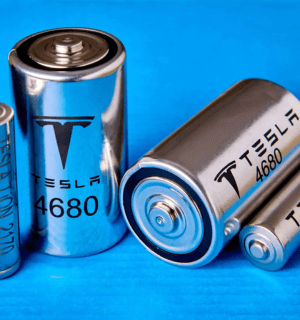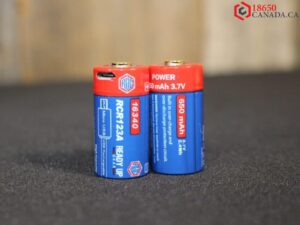Lithium nickel manganese batteries, also known as NMC batteries, are a type of rechargeable battery that combines the advantages of nickel, manganese, and lithium. In this article, we delve into the world of lithium nickel manganese batteries, examining their composition, structure, advantages, applications, working principles, safety considerations, maintenance tips, and future prospects.
As the demand for high-performance batteries continues to grow, lithium nickel manganese batteries have gained significant attention due to their excellent balance between energy density, power output, and safety.
This article provides an in-depth exploration of lithium nickel manganese (LiNiMn) batteries, also known as NMC batteries. It covers their composition, advantages, applications, working principles, safety considerations, maintenance tips, and future prospects. Lithium nickel manganese batteries offer a balanced combination of energy density, power output, and safety, making them suitable for electric vehicles, portable electronics, and energy storage systems.
The article emphasizes their unique characteristics, including a longer lifespan compared to other lithium-ion battery chemistries. Safety considerations, maintenance practices, and ongoing research efforts highlight the importance of safe usage and continuous improvement in this battery technology. Overall, lithium-nickel manganese batteries play a significant role in various industries and hold promising prospects for the future.
What are Lithium Nickel Manganese Batteries?
Lithium nickel manganese batteries are a type of lithium-ion battery that utilizes a cathode composed of a combination of nickel, manganese, and lithium. This combination offers unique properties that make these batteries suitable for various applications.
Composition and Structure
Lithium nickel manganese batteries typically consist of a cathode made of lithium nickel manganese oxide, an anode made of graphite or lithium titanate, and an electrolyte solution. The composition and structure of the cathode play a crucial role in determining the battery’s performance characteristics.
Advantages of Lithium Nickel Manganese Batteries
Lithium nickel manganese batteries offer several advantages that make them highly desirable. They have a high energy density, allowing for long-lasting powder in compact devices. These batteries also exhibit excellent power output and can deliver high currents, making them suitable for applications that require high power. Additionally, they have a longer lifespan compared to some other lithium-ion battery chemistries, enabling extended use.
Applications of Lithium Nickel Manganese Batteries
The unique combination of nickel, manganese, and lithium in these batteries makes them well-suited for a wide range of applications. They are commonly used in electric vehicles, hybrid electric vehicles, and energy storage systems. Lithium nickel manganese batteries also find applications in portable electronics, power tools, and renewable energy systems.

Working Principles
Understanding the working principles of lithium nickel manganese batteries is important to comprehend their functionality. During discharge, lithium ions move from the cathode to the anode, releasing electrons and creating an electric current. The reverse process occurs during charging, where lithium ions move from the anode to the cathode.
Safety Considerations
Safety is a critical aspect when it comes to lithium batteries. Lithium nickel manganese batteries are designed with safety features to mitigate potential risks such as overheating, short circuits, and thermal runaway. Proper usage, handling, and storage practices, along with adherence to manufacturer guidelines are essential to ensure safe operation.
Maintenance and Care Tips
To maximize the lifespan and performance of lithium nickel manganese batteries, certain maintenance and care practices should be followed. Avoiding overcharging or deep discharging the batteries is important to prevent damage. Additionally, storing the batteries in a cool and dry environment and avoiding exposure to extreme temperatures can help maintain their performance.
PANASONIC/SANYO NCR 18650 GA and MOLICEL/NPE INR-18650-P26A in Lithium Nickel Manganese Batteries
Exploring lithium nickel manganese batteries unveils their remarkable attributes, exemplified by the PANASONIC/SANYO NCR 18650 GA and MOLICEL/NPE INR-18650-P26A.
These batteries belong to the broader category of lithium-ion technology, specifically lithium nickel manganese (LiNiMnCoO2) chemistry.
The PANASONIC/SANYO NCR 18650 GA battery showcases impressive energy density and prolonged cycle life, making it ideal for applications such as electric vehicles and renewable energy storage.
Meanwhile, the MOLICEL/NPE INR-18650-P26A battery boasts high power output and reliability, suitable for demanding devices like power tools and high-performance electronics.
By delving into the realm of lithium nickel manganese batteries, we uncover their potential to reshape the landscape of various industries, offering enhanced energy storage solutions and sustainable power sources for the future.
Future Prospects
Lithium nickel manganese batteries continue to be an area of active research and development. Efforts are focused on improving their energy density, cycle life, and safety features. Researchers are exploring new materials and advancements in manufacturing processes to enhance the performance and sustainability of these batteries.
Final Thoughts
Lithium nickel manganese batteries offer a balanced combination of energy density, power output, and safety. Their unique composition and structure make them suitable for a wide range of applications, including electric vehicles, portable electronics, and energy storage systems. Safety considerations, maintenance tips, and ongoing research efforts contribute to their continued development and utilization in various industries.
FAQs
Are Lithium Nickel Manganese Batteries the Same As Lithium-Ion Batteries?
Yes, lithium nickel manganese batteries are a type of lithium-ion battery. They utilize a cathode composed of lithium nickel manganese oxide.
Can Lithium Nickel Manganese Batteries Be Used in Electric Vehicles?
Yes, lithium nickel manganese batteries are commonly used in electric vehicles due to their high energy density, power output, and longer lifespan.
How Do Lithium Nickel Manganese Batteries Differ From Other Lithium-Ion Battery Chemistries?
Lithium nickel manganese batteries offer a balance between energy density, power output, and safety. Compared to other chemistries, they provide higher power output but slightly lower energy density.
What Safety Precautions Should Be Taken When Using Lithium Nickel Manganese Batteries?
To ensure the safe usage of lithium nickel manganese batteries, it is important to follow manufacturer guidelines, avoid overcharging or deep discharging, and prevent exposure to extreme temperatures.
Are Lithium Nickel Manganese Batteries Environmentally Friendly?
Lithium nickel manganese batteries are considered relatively environmentally friendly compared to some other battery chemistries. However, proper recycling and disposal methods should be followed to minimize their environmental impact.

